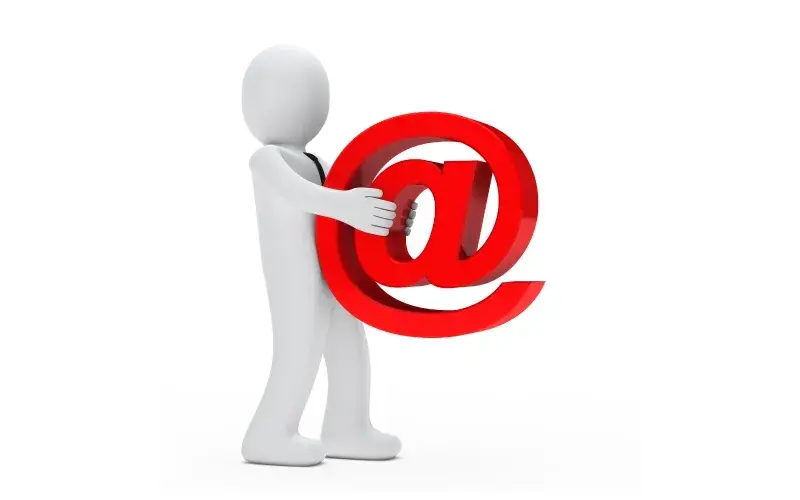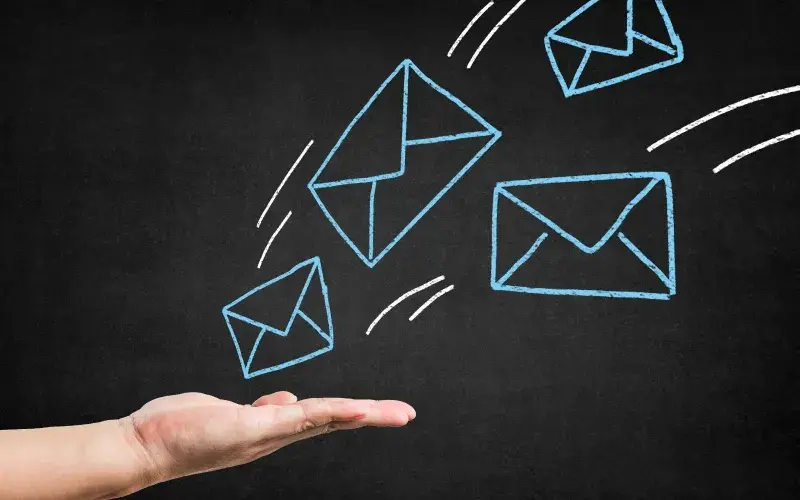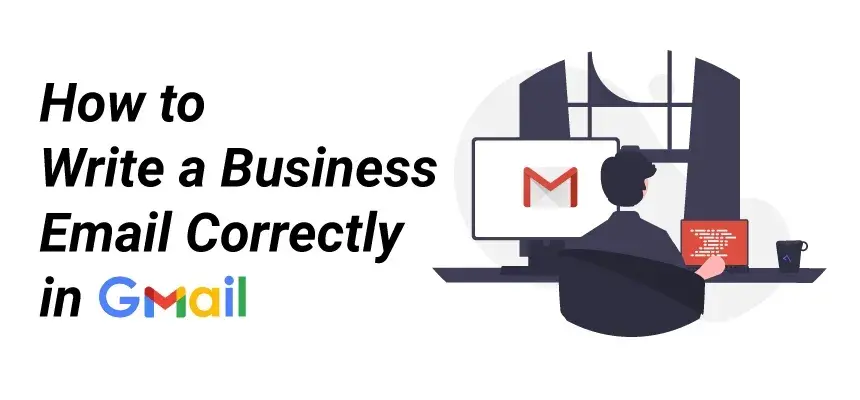Writing professional emails is an essential skill in today’s business world. Whether you’re communicating with clients, colleagues, or supervisors, making a good impression and conveying your message clearly and effectively is essential. Here are some steps to help you write professional emails:
1. Set Receivers’ Email Address (To)
In an email, the “To” field is used to indicate the primary recipient or recipients of the email. The email is addressed to these individuals and is intended for them to read and respond to. The “To” field can contain one or more email addresses, separated by a comma. For example, if you were sending an email to your friend John, you might enter his email address in the “To” field like this:
Alternatively, if you were sending an email to both John and your other friend Jane, you might enter their email addresses in the “To” field like this:
To: [email protected], [email protected]
The “To” field is usually one of the first fields you fill out when composing an email, and it’s typically the most visible field in the email header. It’s essential to be careful when entering email addresses in the “To” field, as sending an email to the wrong address can result in the email not being delivered or being delivered to the wrong person.
2. Set a Carbon Copy to Needed Parties (CC)
In an email, the “CC” field is used to send a copy of the email to other recipients who may be interested in the email’s content but are not the primary recipients. The abbreviation “CC” stands for “carbon copy,” which refers to physically making copies of documents by placing carbon paper between the original document and the copy.
When you send an email and include one or more email addresses in the “CC” field, those recipients will receive a copy of the email. Still, they are not the primary recipients of the email. The primary recipients are the individuals listed in the “To” field.
The “CC” field can contain one or more email addresses, separated by a comma.
For example, suppose you were sending an email to your friend John and wanted to include a copy for your other friend Jane. In that case, you might enter John’s email address in the “To” field and Jane’s email address in the “CC” field like this:
In this example, John is the primary recipient of the email, and Jane is receiving a copy of the email.
It’s essential to use the “CC” field appropriately and not abuse it, as sending too many emails to large numbers of recipients can be perceived as spamming or unnecessarily cluttering up their inboxes.
 https://www.freepik.com/free-photo/_955184.htm
https://www.freepik.com/free-photo/_955184.htm
3. Set a Blind Carbon Copy to Needed Parties (BCC)
In an email, the “BCC” field is used to send a blind carbon copy of the email to other recipients. The abbreviation “BCC” stands for “blind carbon copy,” which is similar to a regular carbon copy (CC). Still, the recipients listed in the “BCC” field are not visible to the other recipients of the email.
When you send an email and include one or more email addresses in the “BCC” field, those recipients will receive a copy of the email. Still, their email addresses will not be visible to the other email recipients. The primary recipients are the individuals in the “To” field, and any recipients in the “CC” field are also visible to the other recipients.
The “BCC” field can contain one or more email addresses, separated by a comma.
For example, if you were sending an email to your friend John and wanted to include a blind copy for your other friend Jane, you might enter John’s email address in the “To” field and Jane’s email address in the “BCC” field like this:
BCC: [email protected]
In this example, John is the primary recipient of the email, and Jane is receiving a copy of the email, but her email address is not visible to John or any other recipients of the email.
The “BCC” field is often used when sending emails to large groups of people as it allows you to send a copy of the email to all the recipients without revealing their email addresses to each other. It can also be used to send a copy of the email to yourself or someone else who needs to be kept informed of the email’s contents but does not need to be included in the email’s primary distribution list.
4. Start with a Clear Subject Line (subject)
In an email, the “subject” field is used to specify a summary or title for the email. The subject is typically displayed in the email’s header, along with the sender and recipient information, and it is used to help the recipient understand the content and purpose of the email.
The subject field is important because it helps the recipient decide whether or not to open and read the email. The recipient may ignore or delete the email without reading it if the subject is not descriptive or relevant. On the other hand, if the subject is clear and concise, it can help the recipient understand the email’s purpose and decide whether to open it.
When composing an email, it’s a good idea to take a few moments to carefully consider the subject line and ensure it accurately reflects the content of the email. A good subject line should be brief and to the point, giving the recipient a clear idea of what the email is about.
Here are a few examples of subject lines that might be used in an email:
- “Meeting request: Wednesday at 10 am.”
- “Follow-up to our conversation yesterday.”
- “Action required: Approve budget proposal.”
In each of these examples, the subject line clearly indicates the purpose of the email, making it easier for the recipient to understand and decide whether or not to open and read the email.
5. Address the Recipient Appropriately
Refers to correctly identifying and addressing the recipient of an email in a way that is respectful, professional, and appropriate for the context of the email.
There are several ways to address the recipient appropriately in an email, depending on the relationship you have with the recipient and the purpose of the email. Here are a few general guidelines for addressing the recipient appropriately:
-
Use the recipient’s proper name or title: If you know the recipient personally or have a professional relationship with them, it’s important to address them using their proper name or title, such as “Mr.” or “Ms.” If you’re not sure what the appropriate title is, it’s usually safe to use “Mr.” or “Ms.” followed by the recipient’s last name.
-
Use a professional greeting: In a professional email, it’s usually appropriate to begin the email with a formal greeting, such as “Dear [Name]” or “Hello [Name].” In a less formal email, you can use a less formal greeting, such as “Hi [Name]” or “Hello [Name].”
-
Use a respectful tone: Regardless of your relationship with the recipient, it’s important to use a respectful tone in your email. This means avoiding overly casual language or slang and being mindful of your choice of words and tone.
By following these guidelines, you can ensure that you are addressing the recipient appropriately in your email and maintaining a professional and respectful relationship.
 https://www.freepik.com/free-photo/_1030042.htm
https://www.freepik.com/free-photo/_1030042.htm
6. Using a Professional Greeting
In an email refers to the practice of beginning the email with a formal or appropriate greeting, depending on the context of the email and the relationship you have with the recipient.
In a professional email, it’s usually appropriate to begin the email with a formal greeting, such as “Dear [Name]” or “Hello [Name].” These greetings convey a sense of professionalism and respect, and they are appropriate for use in most business and formal communication.
Suppose you have a more casual relationship with the recipient. In that case, it may be appropriate to use a less formal greeting, such as “Hi [Name]” or “Hello [Name].” However, it’s still important to maintain a respectful and professional tone in the email, even if you use a less formal greeting.
Using a professional greeting at the beginning of your email can set the tone for the rest of the email and establish a respectful and professional relationship with the recipient.
7. State the Purpose of Your Email
Refers to the practice of clearly and concisely specifying the reason for sending the email in the opening paragraphs of the email. Stating the purpose of your email helps the recipient understand the content and importance of the email and decide whether or not to read the rest of the email.
There are a few key elements to consider when stating the purpose of your email:
-
Be clear and concise:Avoid using unnecessary words or being overly wordy. Instead, clearly and concisely specify the reason for sending the email in as few words as possible.
-
Use an active voice: Use an active voice to specify the action or request you are making. For example, instead of saying, “It is requested that you approve the budget proposal,” say “, Please approve the budget proposal.”
-
Include any relevant details: If the purpose of your email involves a specific action or request, be sure to include any relevant details, such as deadlines, dates, or other important information.
By following these guidelines, you are effectively stating the purpose of your email and helping the recipient understand the content and importance of the email.
8. Providing Necessary Information
in an email refers to the practice of including all the necessary information that the recipient needs to understand and respond to the email. This might include details, background information, documents, or other materials relevant to the email’s purpose.
When writing an email, it’s important to consider what information the recipient needs to understand and respond to the email. This might include things like:
- The context or background information that the recipient needs to understand the purpose of the email
- Any specific details or instructions that are relevant to the email’s purpose
- Any documents or other materials that the recipient needs to complete a task or make a decision
By providing all the necessary information in the email, you can ensure that the recipient fully understands and responds to the email. This helps avoid misunderstandings or the need for follow-up emails, making it easier for the recipient to take the appropriate action or respond to the email.
9. Using a Professional Tone
in an email refers to maintaining a respectful, courteous, and formal tone, regardless of your relationship with the recipient. A professional tone is important in any business or formal communication, as it helps to establish trust and respect between the sender and the recipient.
Here are a few tips for using a professional tone in an email:
-
Use proper grammar and spelling: Avoid slang or casual language, and use proper grammar and spelling in your email. This helps to convey a sense of professionalism and attention to detail.
-
Be respectful and courteous: Even if you are dealing with a difficult or sensitive matter, it’s important to maintain a respectful and courteous tone in your email. Avoid using harsh or confrontational language, and strive to be polite and respectful.
-
Use a formal tone: In a business or formal setting, it’s usually appropriate to use a more formal tone in your email. This means avoiding overly casual language or slang and using more formal words and phrases.
By following these guidelines, you can ensure that you are using a professional tone in your email and maintaining a respectful and professional relationship with the recipient.
10. Ending with a Professional Closing
in an email refers to the practice of concluding the email with a formal or appropriate closing, depending on the context of the email and the relationship you have with the recipient.
In a professional email, it’s usually appropriate to end the email with a formal closing, such as “Sincerely,” “Best regards,” or “Thank you.” These closings convey a sense of professionalism and respect, and they are appropriate for use in most business and formal communication.
Suppose you have a more casual relationship with the recipient. In that case, it may be appropriate to use a less formal closing, such as “Take care,” “Warm regards,” or “Cheers.” However, it’s still important to maintain a respectful and professional tone in the email, even if you use a less formal closing.
By ending your email with a professional closing, you can convey a sense of professionalism and respect and help establish a positive and respectful relationship with the recipient.
By following these steps, you can write professional emails that are clear, concise, and effective.
